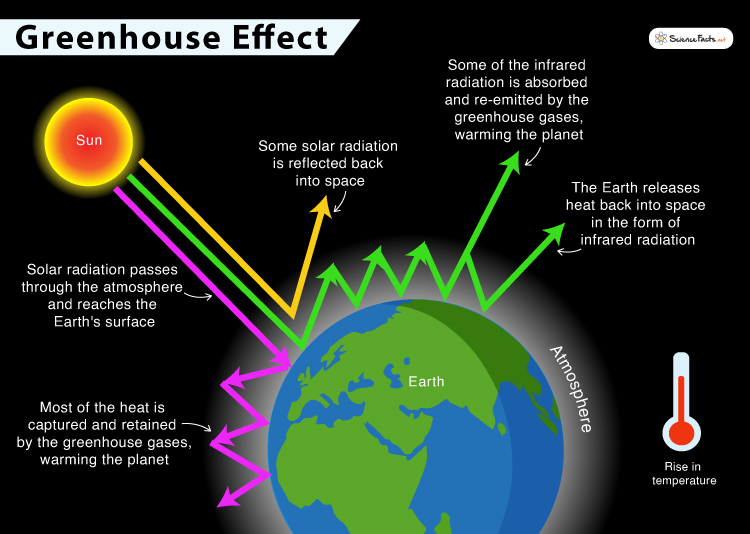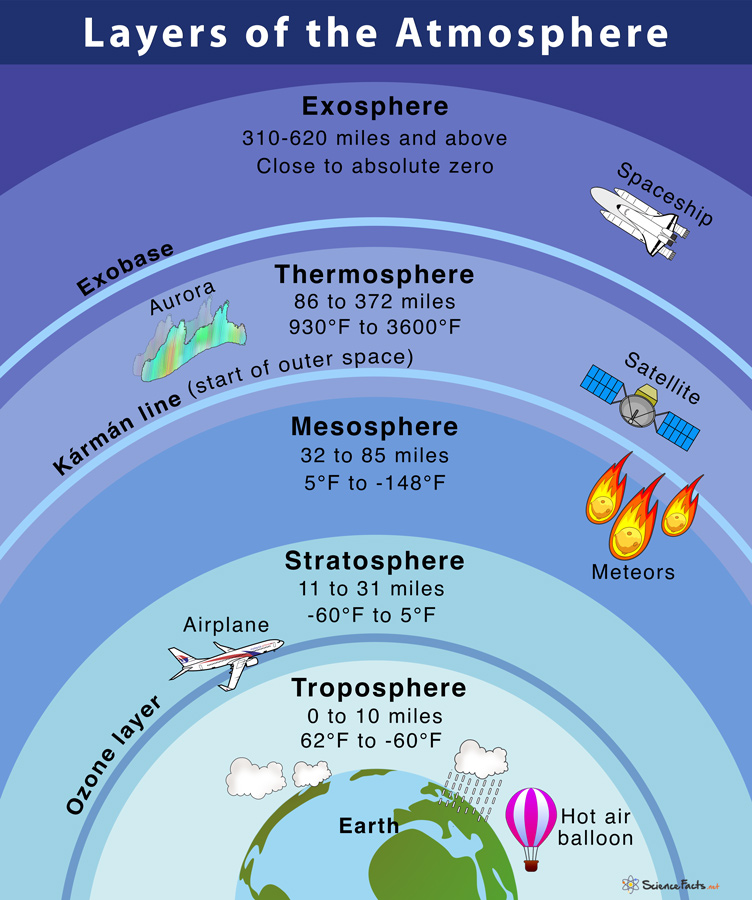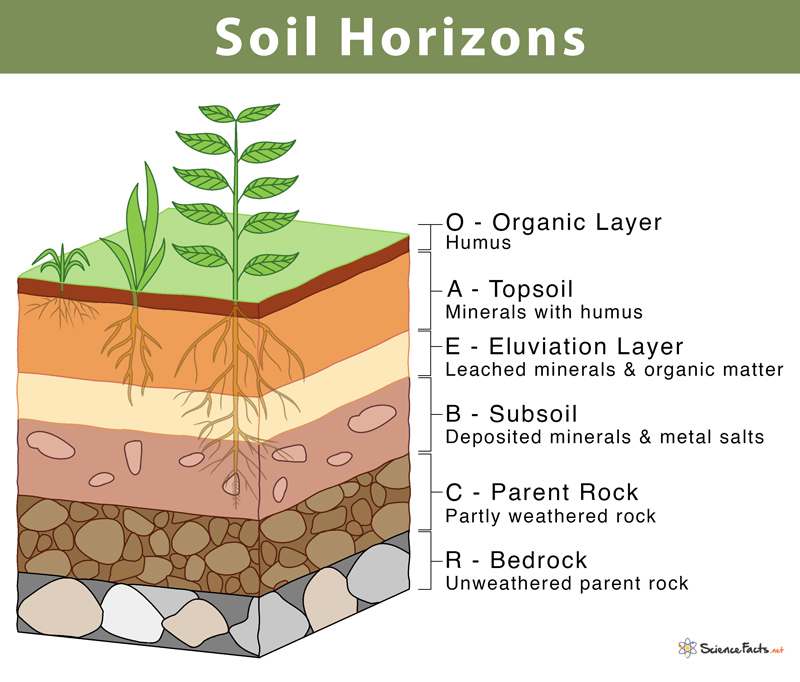Greenhouse Effect
Earth is known as the only livable planet in the solar system. Earth’s temperature is relatively mild and stable, unlike other planets that experience extreme environments, either too hot or too cold. The temperature of the Earth is kept stable by the gases that constitute the Earth’s atmosphere.
Climate scientists have recently spoken about how humans have dramatically changed the Earth’s environment over the past two centuries, increasing its average temperature.
What is the Greenhouse Effect and Why is it Important
The greenhouse effect is described best as the natural warming of the Earth that occurs when gases in the atmosphere trap the Sun’s heat that would have otherwise escaped into space. It helps to keep the Earth habitable and sustainable, with a comfortable climate. Without the greenhouse effect, the Earth’s surface temperature would be cooler by about 33 degrees Celsius or 60 degrees Fahrenheit, which will cease many life forms.
The existence of greenhouse gases was first proposed by French mathematician and physicist Joseph Fourier in 1824. The term ‘greenhouse effect’ was given by Swedish physicist and physical chemist Svante Arrhenius in 1896.
Which Gases Contribute to the Greenhouse Effect
Gases like water vapor, carbon dioxide, nitrous oxide, methane, and chlorofluorocarbons primarily contribute to the greenhouse effect. These gases are called greenhouse gases. The five major greenhouse gases are:
- Water Vapor: Contributes about 36 to 70 percent of the greenhouse effect on Earth. It is the most abundant greenhouse gas in the atmosphere. A change in its atmospheric concentration is not directly linked to human activities but emissions of other greenhouse gases.
- Carbon Dioxide: Contributes about 9 to 26 percent to the overall greenhouse effect and accounts for about 76 percent of the global human-made emissions. Once emitted, 40 percent remains in the atmosphere after a century, 20 percent after 1,000 years, and 10 percent for almost 10,000 years.
- Methane: Contributes about 4 to 9 percent to the global greenhouse effect. It remains stable in the atmosphere for far less time than carbon dioxide. Methane is a more potent greenhouse gas as it can absorb far more heat than carbon dioxide. It has an impact 25 times greater than carbon dioxide over 100 years.
- Nitrous Oxide: Accounts for about 6 percent of human-caused greenhouse gas emissions worldwide. It is a potent greenhouse gas that remains in the atmosphere for a little more than a century.
- Fluorinated Gases: Makes up almost 2 percent of the global human-made greenhouse emission. Hydrofluorocarbons, perfluorocarbons, sulfur hexafluoride, and nitrogen trifluoride are the four classes of fluorinated gases. Although released in smaller quantities than other gases, they trap substantially more heat and have a long atmospheric lifespan of about 1000 years.
What Causes the Greenhouse Effect
According to the Intergovernmental Panel on Climate Change (IPCC), the major forces that cause the greenhouse effect on Earth are population, lifestyle, economic activities, technology use, and climate policy. The four major human activities that act as anthropogenic sources of greenhouse gases emission in the atmosphere are listed below:
- Burning of Fossil Fuels: It is the primary artificial source of greenhouse gas emissions on Earth. Fossil fuels such as coal, petroleum, and natural gas are widely used in transportation and for producing electricity. With the increasing population, fossil fuels’ utilization has also increased, leading to an increase in the greenhouse effect.
- Deforestation: Since plants take in carbon dioxide and release oxygen during photosynthesis, cutting trees affects this process, causing an increase in the concentration of carbon dioxide and other greenhouse gases in the atmosphere.
- Agricultural Activities: Nitrous oxide used in chemical fertilizers and pesticides contributes to about 30 percent of greenhouse gas emissions. This rate is rising with each passing day due to an increase in food demand.
- Industrial Wastes and Landfills: The factories and industries release toxic greenhouse gases into the atmosphere. Landfills release carbon dioxide and methane that further adds to the greenhouse effect.
How does the Greenhouse Effect Work
The greenhouse effect works similar to a greenhouse that traps the Sun’s heat during the daytime, keeping it warm from the inside, even during the chilly nights. The primary steps are:
- During the daytime, almost 70 percent of the Sun’s rays reach the Earth’s surface. They are absorbed by the land and oceans, making the surface hot.
- At night, the Earth releases the heat back to space in the form of infrared light. Almost 30 percent of the absorbed ray is reflected into space.
- While some infrared light returns to space, almost 90 percent is absorbed by the atmospheric greenhouse gases, keeping the Earth warm enough to sustain life.
Consequences of Greenhouse Effect
Today, greenhouse gas emission is higher than ever before. Statistics say that the Earth’s average temperature has increased by 1.8 degrees Fahrenheit between preindustrial times and now. According to the IPCC, 1983 to 2012 was the warmest 30-year period during the last 1,400 years. Also, the five years from 2014 to 2018 were hottest on record globally. Fueled by the anthropogenic greenhouse gas emissions, it has the following overall consequences:
How is the Greenhouse Effect Related to Global Warming and Climate Change
Due to the excessive release of greenhouse gases in the atmosphere, there is a gradual increase in the Earth’s average temperature in the last two centuries, known as global warming. Global warming has led to changes in the Earth’s climate, causing an alteration in many ecosystems and living organisms’ natural habitat. It also raises the sea level due to the melting of glaciers, producing extreme weather events such as floods, drought, hurricanes, and heatwaves.
Other Harmful Effects
- Ozone Layer Depletion: Accumulation of greenhouse gases such as carbon dioxide, methane, and chlorofluorocarbons in the atmosphere depletes the ozone layer present in the upper stratosphere. As a result, the Sun’s harmful ultraviolet rays reach the Earth’s surface and cause skin cancer and crop damage.
- Smog and Air Pollution: Automobile, industrial activities, and forest fires are significant sources of greenhouse gases in the atmosphere forming smog and other forms of air pollutions.
- Acidification of Water Bodies: The greenhouse gases in the air mix with rainwater and fall as acid rain, thus turning the Earth’s water bodies acidic. Also, rainwater drives the soil contaminants that ultimately fall into water bodies such as rivers, lakes, streams, and oceans, causing their acidification.
What is the Runaway Greenhouse Effect
The runaway greenhouse effect is a phenomenon that occurs when a planet absorbs more solar energy than it can radiate back into space. Under these circumstances, the heat lost from the planet’s surface is less. The temperature of the planet rises and reaches such an extent that all life forms cease to exist. This greenhouse effect happened on the surface of the planet Venus. It happens in either of the following circumstances:
Scenario 1: This scenario arises when the planet’s temperature rises to the boiling point of water. At such a high temperature, all water from the water bodies changes to vapor, which traps more heat from the Sun, causing a further increase in the planet’s temperature. This evaporation enhances the greenhouse effect and is thus known as the ‘positive feedback loop.’
Scenario 2: At high temperatures, various chemical reactions start to happen. During one such reaction, carbon dioxide is released from rocks, which heats the planet and causes further disintegration, creating a ‘positive feedback loop.’
Is the Greenhouse Effect Good or Bad
The greenhouse effect is important for life on Earth since it is responsible for sustaining life. Any further increase in the concentration of greenhouse gases in the atmosphere above the threshold level can have severe consequences on the environment and the survival of living organisms in the coming years.
FAQs
Ans. The greenhouse effect is the process by which the Earth’s atmosphere retains heat due to the accumulation of greenhouse gases such as water vapor, carbon dioxide, and methane in the air. In contrast, global warming is the average increase in the temperature of the Earth caused due to the greenhouse effect.
-
References
Article was last reviewed on Thursday, February 2, 2023






